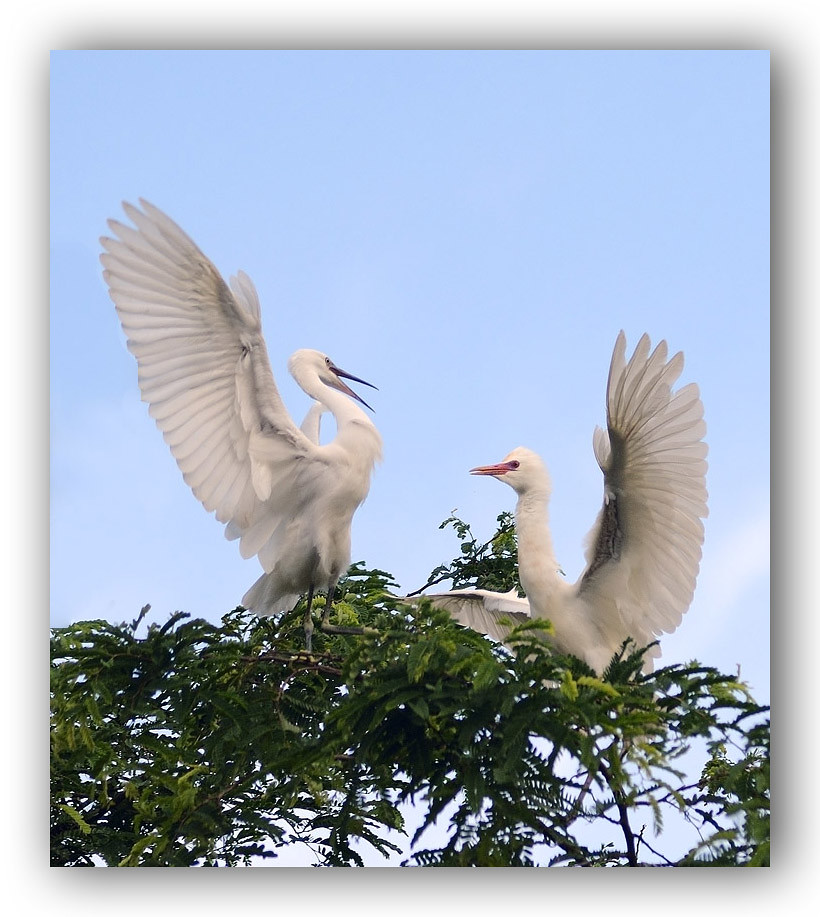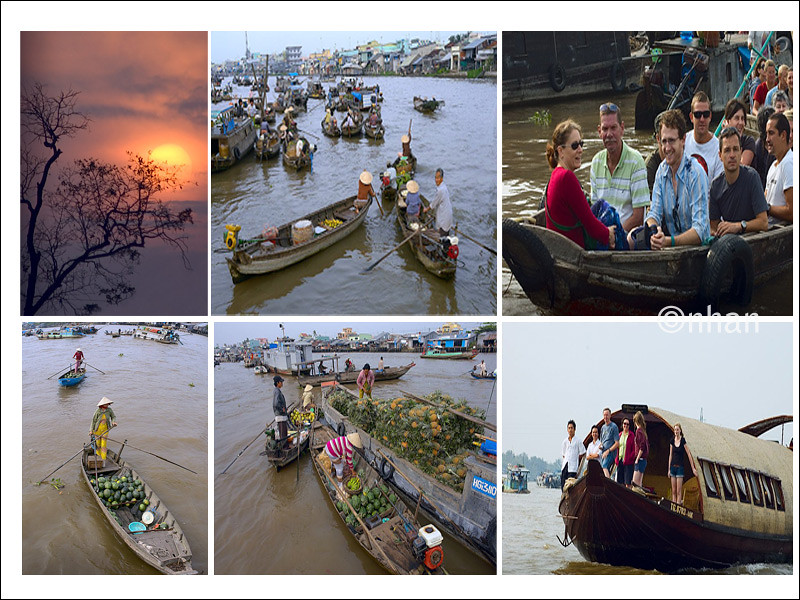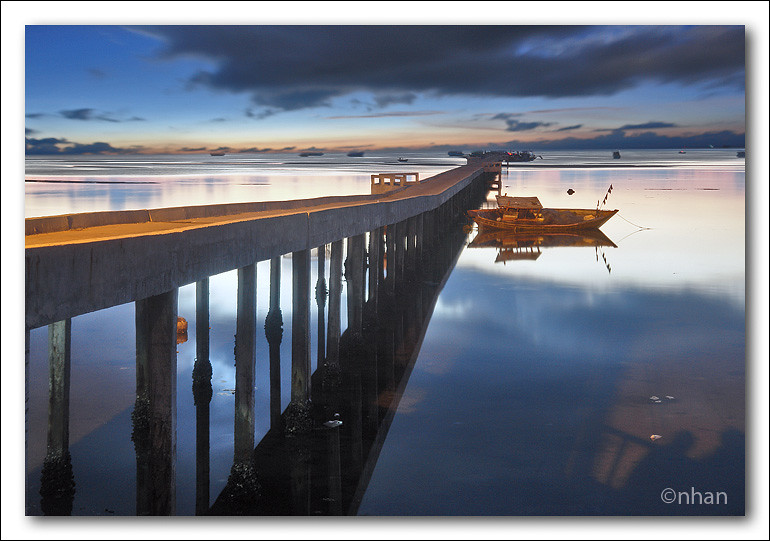Dos and Donts when travelling to Vietnam.
I'd like to add some more information on the top of this post. There was a sinking boat killed over 11 forein tourists in Ha Long Bay in Feb, not long enough since that day, another boat sank right in HaLong Bay. Fortunetly, no one was killed . Another sinking boat killed over 12 local people when they were having a party on the boat in Binh Duong Province, not far from HCM City.
Firstly, I want to introduce to everyone a little bit about the Mekong Delta because I have read on many travel forums and see that many people dont know clearly about Mekong Delta. Mekong Delta includes 13 provinces from Ca Mau, located on the gulf of Thailand, to Long An. (Ca Mau, Kien Giang, Soc Trang, Bac Lieu, Tra Vinh, Vinh Long, An Giang, Can Tho, Long An, Tien Giang, Dong Thap, Hau Giang). There are many nice places to see and various cultures in each province, but some people only know about floating markets in Can Tho like a symbol of Mekong Delta. There is no doubt if saying that Mekong delta people are friendliest in Viet Nam. You can walk while talking on the fone. You can see many people smile with you. You can see many people wave their hands and say hello with you... and here is my dos-and-donts list for you when exploring Mekong Delta, Vietnam.
Things To Do when Travelling to Vietnam
- Keep a raincoat in your backpack when TRavelling to Vietnam in wet season. Although It's not many rainny days these years in wet season but you should keep it in your bag.
- Remember you should not pay more than 30VNĐ for Motorbike river (Xe Om) for 10km. If you are coming from HCM and want to get to Phu Quoc ferry, Do not take a Xe Om, but wait for a free transportation in the bus tation. If you do want to take a Xe Om to get to Phu Quoc ferry then do not pay higher than 20VNĐ.
- Always carry a helmet with you if you are exploring Mekong Delta by motorbikes, and do not speed over 40km/h in Cities.
- If you are coming from HCMC, only take Mai Linh bus or Vinashun bus
- Do not wear short pants when visiting temples, and remember removing your hat when going inside a temple
- One last thing to remember is: Do not take photo in frontier areas.
If you have any problems when exploring Mekong Delta, do not hesitate sending me a message through: Nhanphotors@gmail.com or Exploringmekong@gmail.com. Hope you have a nice trip.
I'd like to add some more information on the top of this post. There was a sinking boat killed over 11 forein tourists in Ha Long Bay in Feb, not long enough since that day, another boat sank right in HaLong Bay. Fortunetly, no one was killed . Another sinking boat killed over 12 local people when they were having a party on the boat in Binh Duong Province, not far from HCM City.
Firstly, I want to introduce to everyone a little bit about the Mekong Delta because I have read on many travel forums and see that many people dont know clearly about Mekong Delta. Mekong Delta includes 13 provinces from Ca Mau, located on the gulf of Thailand, to Long An. (Ca Mau, Kien Giang, Soc Trang, Bac Lieu, Tra Vinh, Vinh Long, An Giang, Can Tho, Long An, Tien Giang, Dong Thap, Hau Giang). There are many nice places to see and various cultures in each province, but some people only know about floating markets in Can Tho like a symbol of Mekong Delta. There is no doubt if saying that Mekong delta people are friendliest in Viet Nam. You can walk while talking on the fone. You can see many people smile with you. You can see many people wave their hands and say hello with you... and here is my dos-and-donts list for you when exploring Mekong Delta, Vietnam.
Things To Do when Travelling to Vietnam
- Keep a raincoat in your backpack when TRavelling to Vietnam in wet season. Although It's not many rainny days these years in wet season but you should keep it in your bag.
- Remember you should not pay more than 30VNĐ for Motorbike river (Xe Om) for 10km. If you are coming from HCM and want to get to Phu Quoc ferry, Do not take a Xe Om, but wait for a free transportation in the bus tation. If you do want to take a Xe Om to get to Phu Quoc ferry then do not pay higher than 20VNĐ.
- Always carry a helmet with you if you are exploring Mekong Delta by motorbikes, and do not speed over 40km/h in Cities.
- If you are coming from HCMC, only take Mai Linh bus or Vinashun bus
- Do not wear short pants when visiting temples, and remember removing your hat when going inside a temple
- One last thing to remember is: Do not take photo in frontier areas.
Take a hotel business card from the reception desk before venturing out from your hotel. This will make your return to the hotel in a taxi or cyclo much easier.
Carry a roll of toilet paper in your daypack on long excursions from your base hotel. You never know when you might need it!
Dress appropriately. Not only for the prevailing weather, but also not to cause offence to the local people. Vietnamese have conservative dress codes, and it is only in larger cities that these codes are a little more relaxed. Do not wear revealing clothing.
If invited into a Vietnamese home, always remove your shoes at the front door when entering.
Ask for permission when taking a photograph of someone. If they indicate that they do not want you to, then abide by their wishes.
Things Not To Do in Vietnam
Offer money or push the issue.
Drink plenty of bottled water. During the summer months you should be drinking a minimum of 2 litres per day. If you drink tea, coffee and alcohol you should increase you water intake accordingly as these will help to dehydrate you.
Never carry more money than you need when walking around the streets.
Do not wear large amounts of jewellery. There are two reasons for not doing this (1) It is considered impolite to flaunt wealth in public; (2) It is more likely that you may become a victim of a pickpocket or drive-by bag snatcher.
Don't be paranoid about your security, just be aware of your surroundings.
Don't wear singlets, shorts, dresses or skirts, or tops with low-neck lines and bare shoulders to Temples and Pagodas. To do this is considered extremely rude and offensive.
Avoid giving empty water bottles, sweets and candies or pens to the local people when trekking through ethnic minority villages. You cannot guarantee that the empty bottles will be disposed of in a correct manner, and the people have no access to dental health. If you want to give pens, ask your guide to introduce you to the local teacher and donate them to the whole community.
Never sleep or sit with the soles of your feet pointing towards the family altar when in someone’s house.
Never lose your temper in public or when bargaining for a purchase. This is considered a serious loss of face for both parties. Always maintain a cool and happy demeanour and you will be reciprocated with the same.
Do not try to take photographs of military installations or anything to do with the military. This can be seen as a breach of national security.
Never take video cameras into the ethnic minority villages. They are considered to be too intrusive by the local people.
The above advice is meant to help you have a perfect trip to Vietnam.
Do not be overly paranoid though. Generally, Vietnamese people are very appreciative if they see you trying to abide by their customs, and very forgiving if you get it wrong, or forget. If you make the effort, you will be rewarded.If you have any problems when exploring Mekong Delta, do not hesitate sending me a message through: Nhanphotors@gmail.com or Exploringmekong@gmail.com. Hope you have a nice trip.



















